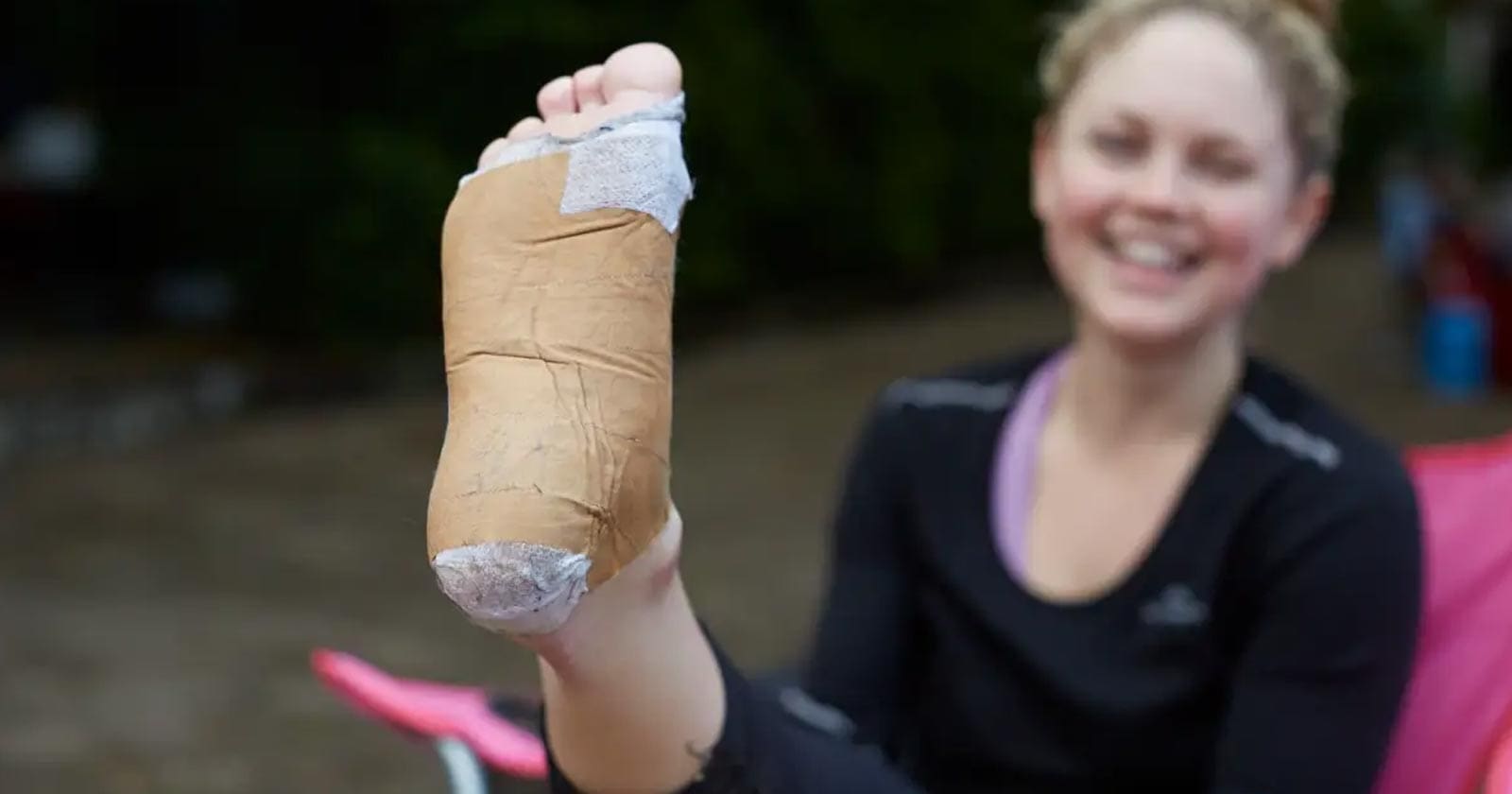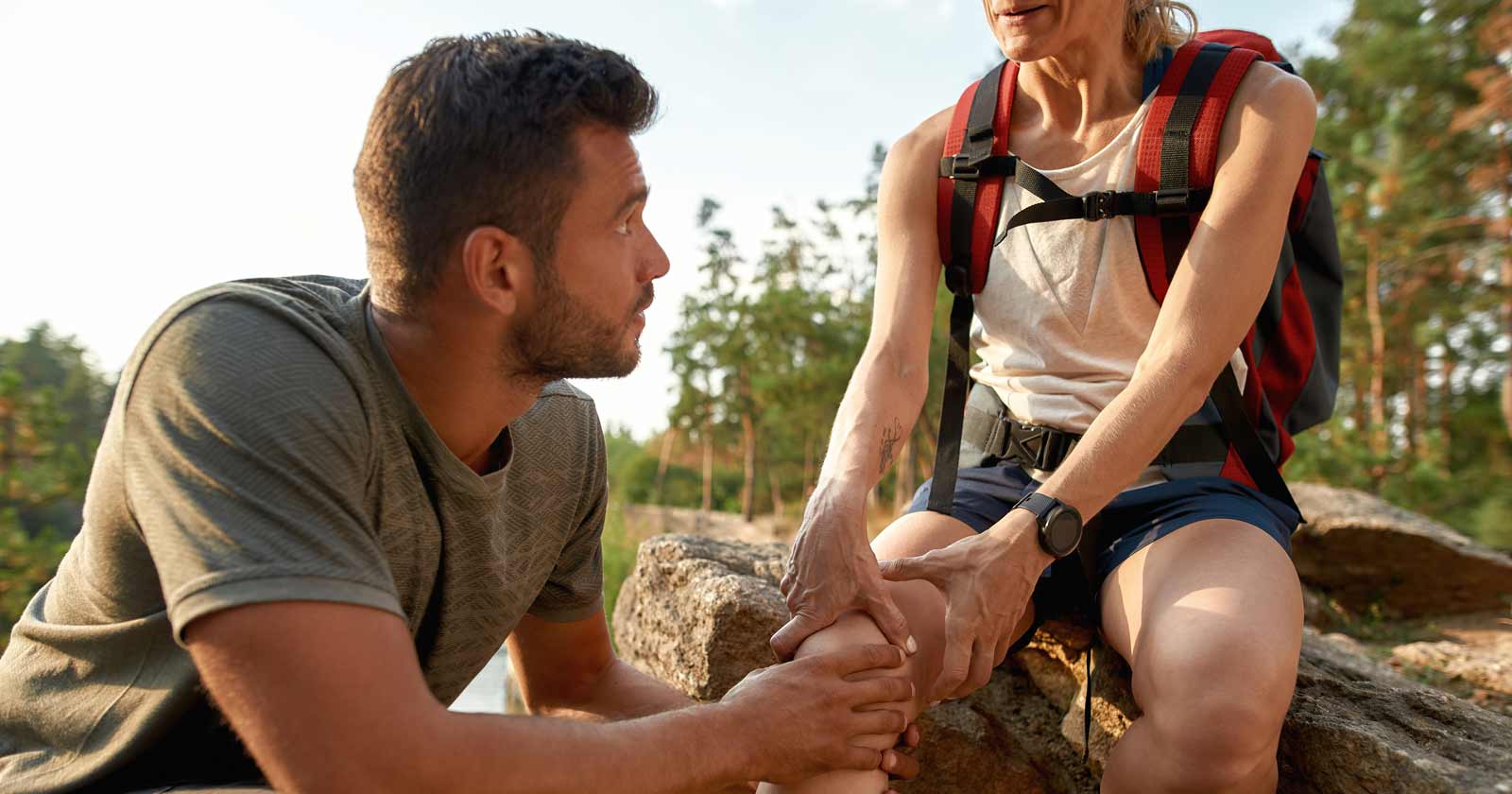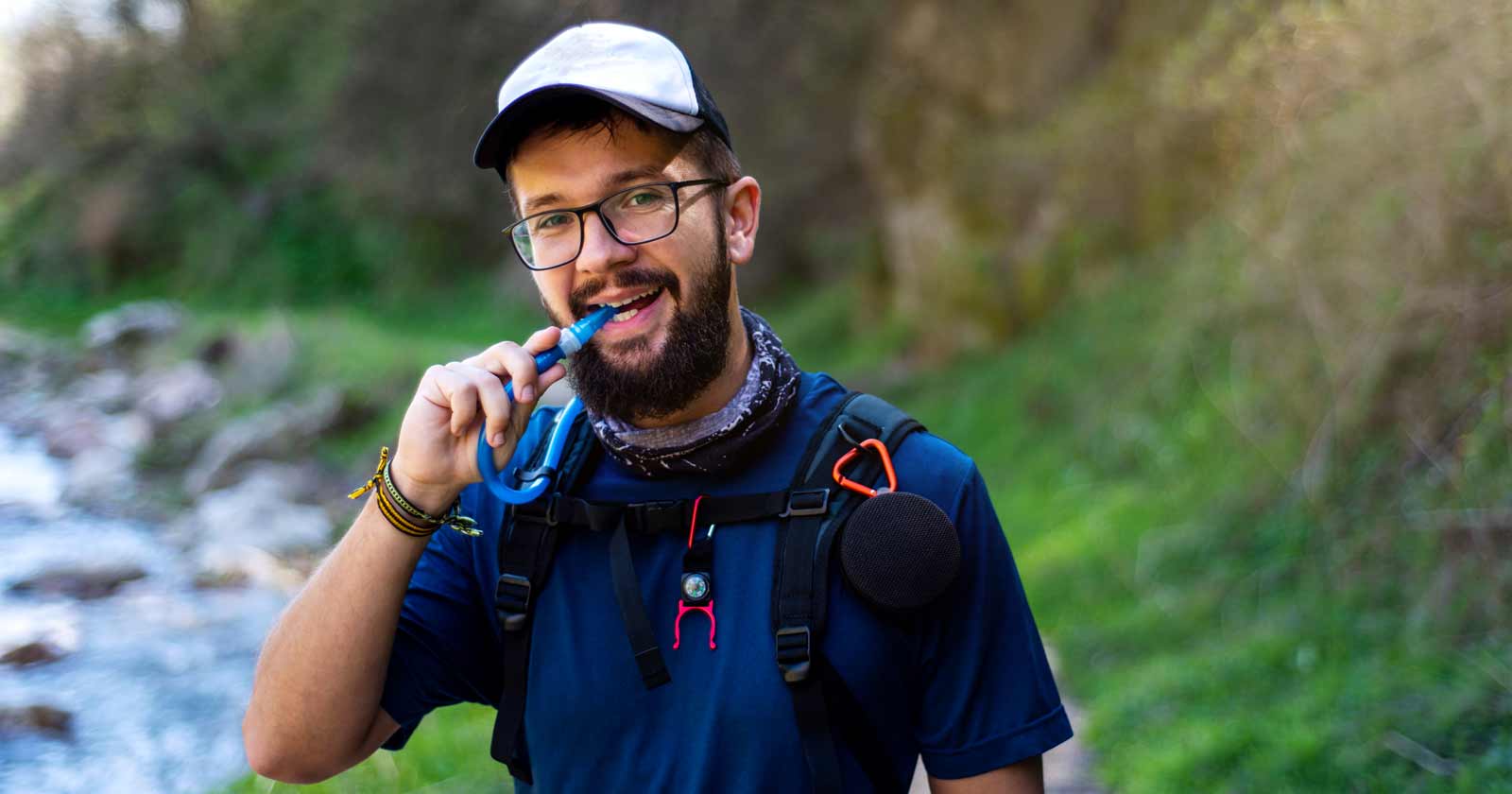Except in rare cases, leeches aren’t generally harmful
Outdoor activities like hiking and trail running are great ways to keep fit and healthy. But being outdoors in nature can also welcome parasites like leeches. Those sneaky, slithery critters everyone loves. Have you ever felt that shiver crawl up your back after you pull off your sock and there IT is – thick, black, shiny and fattened on your blood? The next repulsive thought is how to get it off.
Leeches find their host by detecting vibrations and heat with tiny sense organs. So my tip is, tread lightly. Finding a leech on your body can be scary, at least it is for my wife, but there’s really no need to panic. For some reason they tend to avoid me, especially when she is around. I think leeches can smell fear. Later I’ll give you a few tips on how you can calmly and safely remove a leech without pain or complications from the bite. But first, here’s a quick overview of what leeches are and where you are likely to find them.
What is a leech?
Leeches are segmented worms in the Subclass Hirudinea that are usually ectoparasitic. They are bilaterally symmetrical, with thick muscular bodies. Usually they are dorso-ventrally (front to back) flattened and segmented, though the segments are not often seen. Some leeches are long and worm-like, others pear-shaped and broad. Most can vary considerably in shape both between the elongated and contracted state and between the starved and full condition. The body tapers towards the head and has a small oral sucker surrounding the mouth and a larger caudal (tail) sucker at the rear end, except the marine fish parasites, Pisciolidae, which have a larger oral sucker. The anus is on the dorsal surface (top) just in front of the rear sucker.
Leeches usually have three jaws and make a Y-shaped incision. The Australian land leech has only two jaws and makes a V-shaped incision.
Where you will find them
Most leeches are freshwater animals, but many terrestrial and marine species occur. Land leeches are common on the ground or in low foliage in wet rain forests. In drier forests they may be found on the ground in seepage moistened places. Most do not enter water and cannot swim, but can survive periods of immersion.
In dry weather, some species burrow in the soil where they can survive for many months even in a total lack of environmental water. In these conditions the body is contracted dry and rigid, the suckers not distinguishable, and the skin completely dry. Within ten minutes of sprinkling with a few drops of water, these leeches emerge, fully active.
Freshwater leeches prefer to live in still or slowly flowing waters, but specimens have been collected from fast flowing streams. Some species are considered amphibious as they have been observed in both terrestrial and aquatic habitats.
Leeches can be found almost anywhere in Australia where there are suitable damp areas and watercourses although they are absent from the permanently arid areas.
What do leeches eat?
You! Only kidding. Leeches feed as blood sucking parasites on preferred hosts. If the preferred food is not available most leeches will feed on other classes of host. Some feed on the blood of humans and other mammals, while others parasitise fish, frogs, turtles or birds. Some leeches will even take a meal from other sanguivorous leeches which may die after the attack.
Are leeches dangerous?
The presence of hirudin in the wound following a leech bite may cause oozing to continue for several hours. Although inconvenient, blood loss is not significant. Gut bacteria can cause wound infection. There may also be a delayed irritation and itching after a bite. There appears to be no support for the theory that mouthparts left behind after forced removal of the leech causes this reaction.
Can leeches transmit disease?
There is no evidence to suggest that they do. The presence of trypanosomes in the gut of jawless leeches has been noted, but jawed leeches do not appear to be hosts. Trypanosomes cause the African sleeping sickness in humans. Leeches transmit trypanosomes that infect fish, crocodiles and even platypus, but none of them are dangerous to humans. Allergy to leech bite has been reported. Medical opinion should be sought, depending on the severity of the reaction.
Here’s some tips to keep leeches away
- Wear protective clothing: Leeches can’t bite through thick and tight-fitting clothing, so wearing long-sleeved shirts and pants can help protect your skin.
- Use a natural repellent: Applying a natural repellent (such as Oil of Lemon Eucalyptus) on your skin won’t harm leeches and can help keep them away.
- Avoid areas with standing water: Leeches are often found in damp areas, so try to avoid walking near standing water or wet vegetation.
- Use salt: Sprinkling salt on the ground around you can deter leeches as they do not like salt.
- Check your body regularly: If you are in an area where leeches are prevalent, make sure to check your body regularly for any attached leeches. The sooner you remove them, the less blood they will have ingested, and the less risk of infection.
It’s important to note that leeches are not harmful to humans in most cases, and they can even be used in medical treatments. However, if you are concerned about leech bites or have any other health concerns, it’s best to consult with a medical professional.
How to safely remove a leech
This is the part I know you have been waiting for.
Your first step in removing a leech is finding it. If you spot a leech on your skin, check the rest of your body to see if any more have attached themselves to you. Once you find a leech, you can begin to safely remove it.
The basic leech removal steps are:
- Locate the head and mouth. A leech’s head is smaller and slimmer than the rest of its body. Look for the narrowest part of the leech to locate its mouth. This is usually the part attached to your skin.
- Pull the skin under the leech taut. Use one hand to gently pull your skin under the leech until it’s taut.
- Slide a fingernail underneath the mouth. Gently slide a fingernail under the leech’s mouth to separate it from your skin.
- Flick the leech away. Use your fingers to flick the leech away before it reattaches.
- Clean the wound. Clean your wound with rubbing alcohol or a first-aid cleanser to help avoid infection.
- Bandage your wound. You’ll see a lot of bleeding when you remove the leech. Clean the wound and then use a sterile bandage to cover it.
- Change the bandage frequently for the first few hours until bleeding stops.
You can also try these alternative methods for removing a leech:
- Using a piece of paper or a credit card instead of your fingernail. For this method, you’ll follow all the same steps as above, but you’ll slide a thin piece of paper or a credit card under the leech’s mouth instead of your finger.
- Letting the leech fall off naturally. Usually, this can take about 30-45 minutes. You can wait for the leech to detach itself when it’s finished feeding, especially if you’re having trouble removing it. If the leech does not fall off for a long time or attaches to a hard to reach area, having it medically removed is the best course of action.
Removing leeches from difficult locations
Leeches will sometimes attach to hard-to-reach areas, like your ear canal, nose, eyes or mouth. This can make it difficult to use the above methods for removal. If this happens, try one or more of the following:
- Use rubbing alcohol or hydrogen peroxide. To remove a leech from your mouth, gargle with alcohol or hydrogen peroxide for about 30 seconds. Swish the alcohol or peroxide in your mouth like mouthwash, then spit it out. Check to see if the leech comes out with it.
- Puncture the leech. Leeches can grow up to 10 times their original size when they’re feeding. Sometimes, this can cause them to block an area like your nose or ear. Use a sharp object to pop the leech, killing it and making it easier to remove.
In some cases, the removal method will depend on the location the leech attaches to and may need the help of a medical professional to remove. Leeches that attach internally may require surgery to remove. This can happen if a person swallows contaminated water.
What not to do
Do not remove a leech using any of the following methods. These can cause the leech to vomit blood into your wound and increase your risk of infection:
- salting
- fire
- shampoo
- bug repellant
- pulling the leech
Final notes
Finding a leech on your skin can be alarming. However, except in rare cases, leeches aren’t generally harmful. You can carefully remove a leech by using your fingernail or a sheet of paper to separate the leech’s mouth from your skin. Don’t use methods like salting, burning, or drowning to remove a leech, as these can lead to infection. Contact a medical professional if you’re unable to remove a leech, experience any signs of infection, or have an allergic reaction.
If you want to know how to keep other blood sucking insects such as fleas, fly’s, mosquitoes, and the arachnid tick away, you can find out here.
Some of this information courtesy of the Australian Museum






Give me a leech over a tick any day !
Great info
I find leeches quite amusing. Maybe it’s my sadistic side coming out but I find it funny how such tiny creatures can create so much fear.